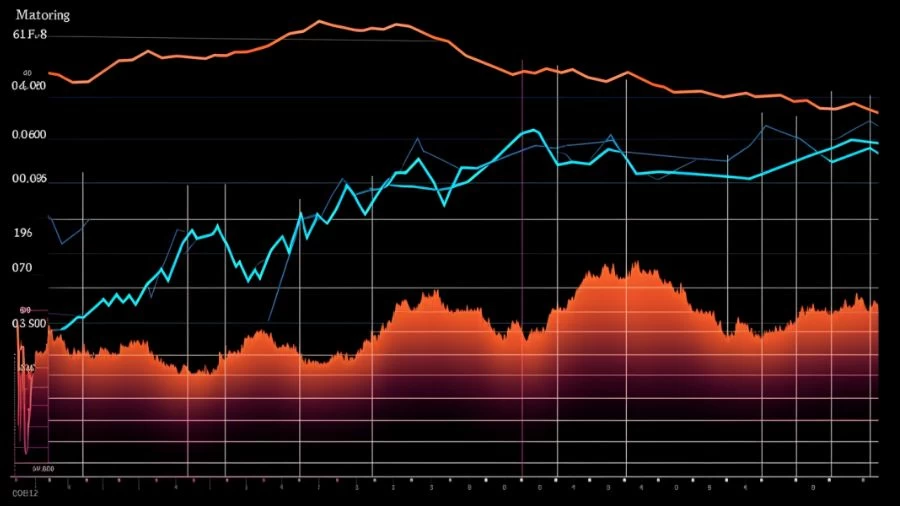
Why Did the Average 30-Year Fixed Mortgage Rate Rise to 7.67% Last Week?
A sharp increase in the average 30-year fixed mortgage rate to 7.67% last week resulted from climbing 10-year Treasury yields, fueled by the Federal Reserve's actions against inflation, posing challenges for prospective homebuyers and affecting housing market dynamics.
by Kowsalya
Published Oct 14, 2023 | Updated Oct 14, 2023 | 📖 6 min read
Why Did the Average 30-Year Fixed Mortgage Rate Rise to 7.67% Last Week?
The recent increase in the average 30-year fixed mortgage rate to 7.67% has been influenced by various critical factors within the financial landscape. This surge to a multi-decade high presents challenges for both potential homebuyers and the housing market as a whole.
Bond Yields and the Federal Reserve
One primary driver of the elevated mortgage rates is the movement of 10-year Treasury yields. These yields reached their highest level since 2007 last week. The increase in Treasury yields is closely linked to the Federal Reserve's actions. The Fed has been tapering its bond purchases and raising the federal funds rate to combat rising inflation, leading to higher yields in the bond market, which, in turn, affects mortgage rates.
Supply and Demand Dynamics
The housing market has been affected by the reluctance of many existing homeowners to sell and move. They had secured mortgages at lower interest rates in the past, and the current high rates have made them hesitant to relocate. This hesitancy has contributed to a limited housing supply, which is pushing home prices higher. Despite efforts by builders to incentivize prospective buyers with financial offers, existing-home sales remain sluggish.
Home-Purchase Activity
While there was a slight increase in the index of home-purchase applications, overall home-purchase activity is close to its lowest level in nearly three decades. The combination of rising mortgage rates and constrained housing supply has created a challenging environment for homebuyers.
Refinancing Appeal
Some homeowners are still considering refinancing their existing mortgages to lower their monthly payments, as indicated by a slight uptick in the overall measure of mortgage applications, which includes refinancing activity.
Amid the backdrop of these rising rates, housing industry lobby groups, including the Mortgage Bankers Association (MBA), have raised concerns about the impact of higher borrowing costs on the housing market. They've urged the Federal Reserve to proceed with caution in implementing further interest rate hikes.
The increase in mortgage rates to 7.67% emphasizes the delicate balance between the central bank's efforts to control inflation and the challenges faced by prospective homebuyers and the broader housing market. In this environment, homebuyers are advised to carefully monitor mortgage rate trends, consider their financial qualifications, and make well-informed decisions regarding real estate transactions.
Join us at MarketsHost for a journey to financial expertise. Explore and reach new heights.
What Causes Mortgage Rates to Rise or Fall?
Mortgage rates are influenced by a combination of macroeconomic and industry factors, and their movement is not always attributable to a single cause. Here's a detailed explanation of the factors that cause mortgage rates to rise or fall,
- Bond Market Yields: One of the most significant factors affecting mortgage rates is the bond market, especially the yield on the 10-year Treasury note. Mortgage rates tend to follow the direction of long-term bond yields. When the yield on the 10-year Treasury increases, mortgage rates also tend to rise, and when bond yields fall, mortgage rates typically follow suit. This relationship is due to the fact that mortgage-backed securities (MBS) are closely tied to the bond market.
- Federal Reserve Policy: The Federal Reserve plays a critical role in shaping mortgage rates. The Fed's monetary policy decisions, such as interest rate changes and bond purchases, have a direct and indirect impact on mortgage rates. When the Fed buys bonds, it increases demand for these securities, which can drive up their prices and reduce yields. Lower bond yields often lead to lower mortgage rates. Conversely, when the Fed begins to reduce its bond purchases or raises the federal funds rate, it can put upward pressure on mortgage rates.
- Competition Among Lenders: Competition in the mortgage lending industry can also influence rates. When lenders compete for business, they may offer more attractive mortgage rates to attract borrowers. This competition can lead to more favorable terms for borrowers. Additionally, the type of loan and the specific lender may affect the interest rate offered to a borrower.
- Economic Conditions: The overall health of the economy is a significant determinant of mortgage rates. In a strong and growing economy, demand for loans tends to increase, which can push interest rates higher. Conversely, during economic downturns or periods of uncertainty, demand for loans may decrease, leading to lower mortgage rates.
- Inflation Expectations: Expectations about future inflation can also impact mortgage rates. When there are concerns about rising inflation, lenders may demand higher interest rates to compensate for the eroding purchasing power of the money they will receive over time. Higher inflation expectations can lead to higher mortgage rates.
- Credit Market Conditions: The creditworthiness of borrowers can influence the rates they are offered. Borrowers with higher credit scores are typically offered lower interest rates, while those with lower credit scores may face higher rates or find it more challenging to qualify for a mortgage.
- Government Policies: Government policies and regulations can impact the mortgage market. For example, government-sponsored enterprises like Fannie Mae and Freddie Mac can influence mortgage rates through their activities in the secondary mortgage market.
- Global Economic Events: Global economic events, such as geopolitical tensions or international economic crises, can have an impact on financial markets and, consequently, on mortgage rates. Investors often seek the safety of U.S. bonds during times of global uncertainty, affecting bond yields and mortgage rates.
Today's Mortgage Rate Averages
Refinancing rates for various loan types experienced relatively modest increases, with the 30-year refinance average rising by just 4 basis points to reach 8.44%. The VA 30-year fixed-rate loan was the exception, witnessing a notable double-digit increase of 11 basis points, pushing it back over the 8.00% threshold. Meanwhile, the 15-year refinance average saw a more moderate increase of 2 basis points. Notably, rates for jumbo refinance loans remained unchanged during this period.
Here is the list of Today's Mortgage Rate Averages,
|
Loan Type |
Refinance Rates |
Daily Change |
|
30-Year Fixed |
8.44% |
+0.04 |
|
FHA 30-Year Fixed |
8.21% |
+0.02 |
|
VA 30-Year Fixed |
8.08% |
+0.11 |
|
Jumbo 30-Year Fixed |
7.27% |
No Change |
|
20-Year Fixed |
8.32% |
+0.01 |
|
15-Year Fixed |
7.57% |
+0.02 |
|
FHA 15-Year Fixed |
7.42% |
No Change |
|
Jumbo 15-Year Fixed |
7.27% |
No Change |
|
10-Year Fixed |
7.51% |
+0.01 |
|
10/6 ARM |
8.04% |
+0.01 |
|
7/6 ARM |
7.90% |
+0.03 |
|
Jumbo 7/6 ARM |
7.19% |
No Change |
|
5/6 ARM |
7.72% |
No Change |
|
Jumbo 5/6 ARM |
7.06% |
No Change |
Why Did the Average 30-Year Fixed Mortgage Rate Rise to 7.67% Last Week-FAQs
1. Why have mortgage rates increased to 7.67%?
Mortgage rates can rise due to several factors, including changes in the bond market, Federal Reserve policy, economic conditions, and more.
2. How are Treasury bond yields related to mortgage rates?
Mortgage rates often follow the direction of long-term Treasury bond yields. When Treasury yields rise, mortgage rates tend to rise as well, and when yields fall, mortgage rates usually follow suit.
3. What is the impact of the Federal Reserve's actions on mortgage rates?
The Federal Reserve's actions, such as raising the federal funds rate and tapering bond purchases, can indirectly impact mortgage rates.
4. How does the supply and demand for homes affect mortgage rates?
If existing homeowners are hesitant to sell and move due to higher interest rates, it can lead to limited housing supply.
5. Are there any options for those looking to buy or refinance in a high-rate environment?
Despite higher rates, some homeowners may still consider refinancing their existing mortgages to lower monthly payments.




